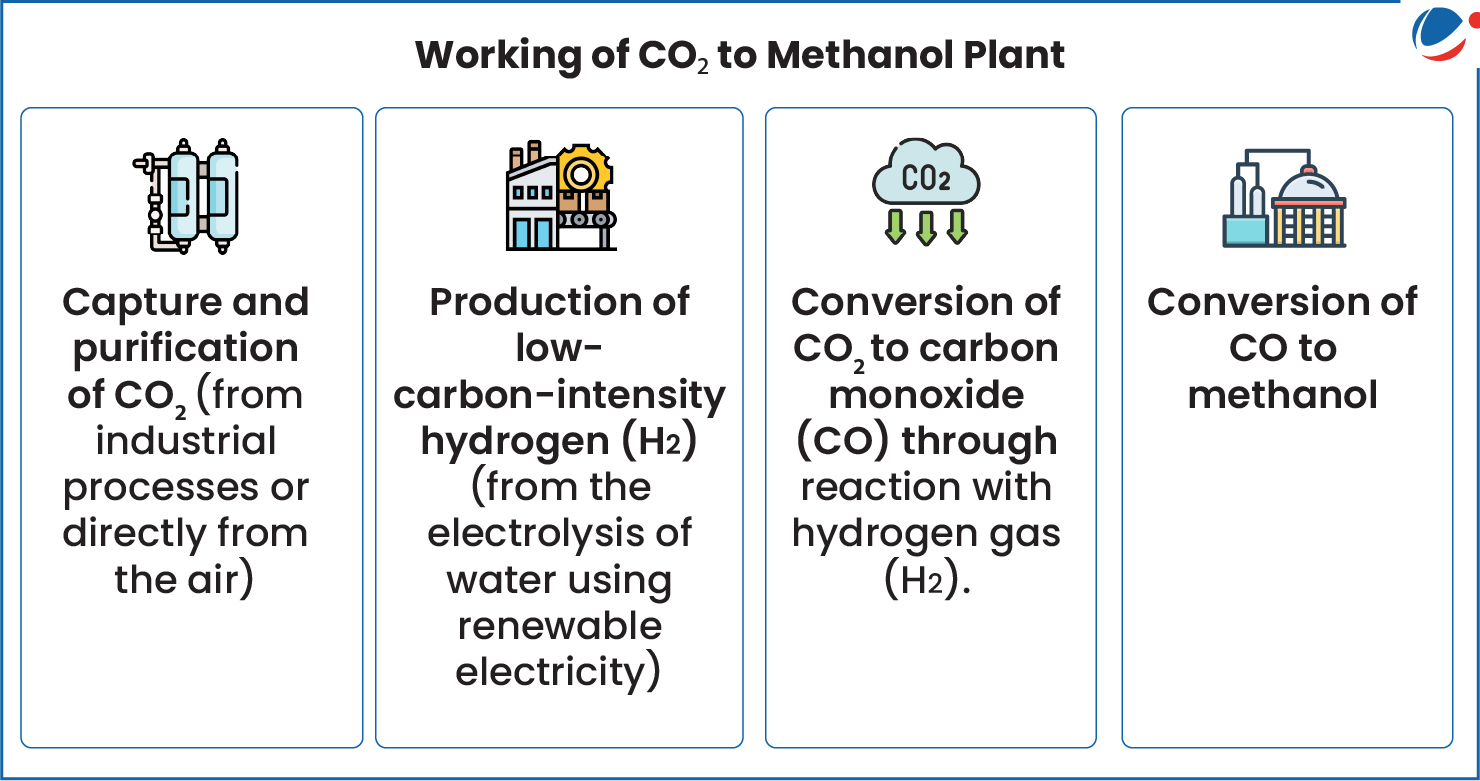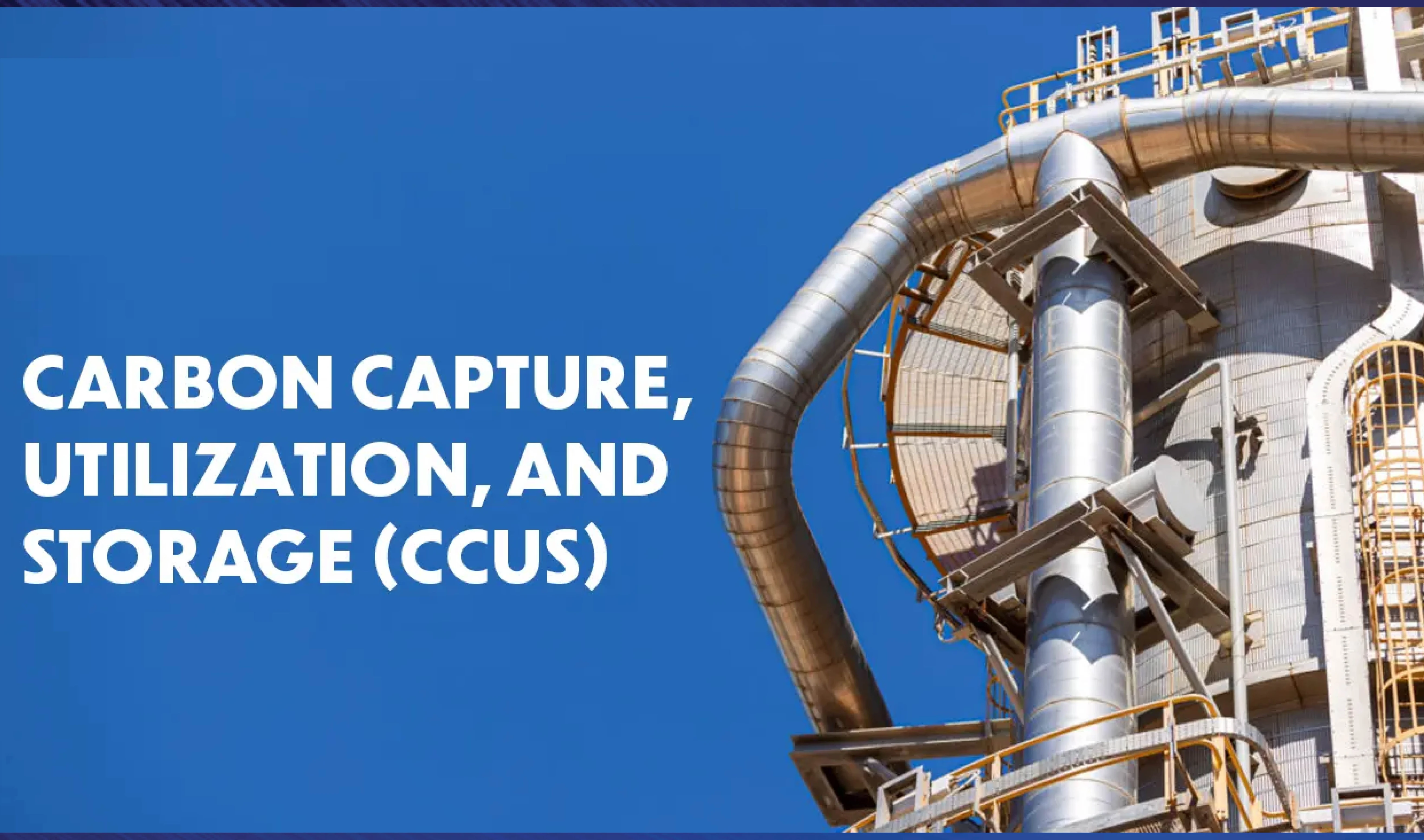NTPC announced successful synthesis of CO2 captured from flue gas with hydrogen produced from a Proton Exchange Membrane (PEM) electrolyzer, which was then converted into methanol.
- NTPC has also developed its first indigenous methanol synthesis catalyst.
- It is considered to be a historic step in carbon management and sustainable fuel production.
About Methanol (CH3OH)
- Also known as methyl/wood alcohol, it is the simplest alcohol and mixes completely with water.
- It's a clear, colorless, flammable liquid with a distinctive odour similar to ethanol (drinking alcohol).

About Methanol (CH3OH)
- Also known as methyl/wood alcohol, it is the simplest alcohol and mixes completely with water.
- It's a clear, colorless, flammable liquid with a distinctive odour similar to ethanol (drinking alcohol).
Benefits of CO₂-to-Methanol Technology
- Lower energy demand and cost for production of methanol as compared to conventional processes.
- Carbon Capture and Utilization (CCU): addresses CO₂ emissions by capturing it from flue gas of coal based power plants etc
- Strengthen India’s vision of ‘Methanol Economy’ and help in meeting Paris Climate Change Goals
- Reduce India's dependence on oil imports and curb the curbs pollution from electricity sector
- Energy Storage: It can be stored and transported more efficiently than hydrogen (less flammable than hydrogen).




